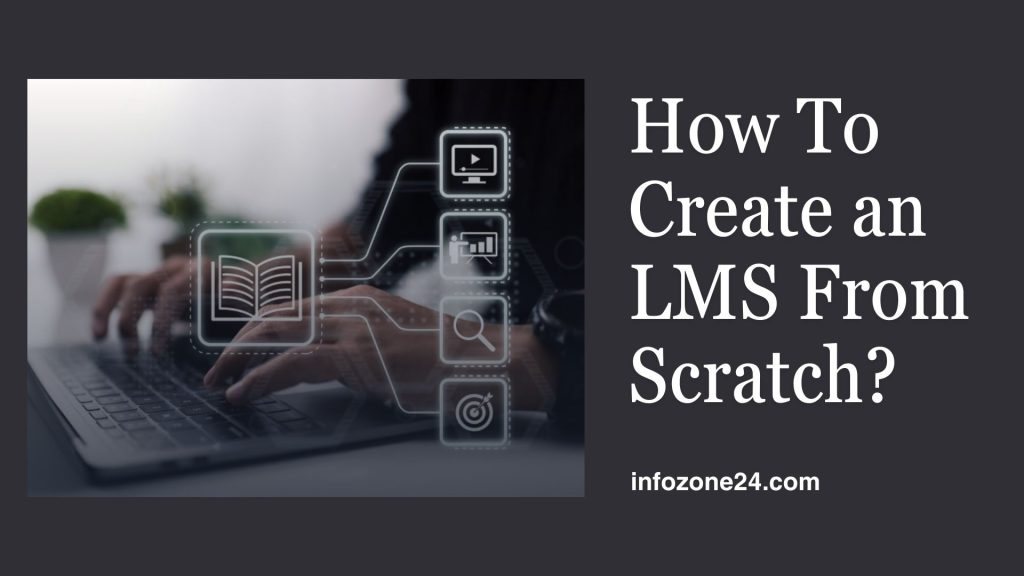Learning Management Systems (LMS) are becoming essential tools for business training and education. They provide an organized and effective method for handling and distributing instructional materials.
Even though there are many pre-made LMS options available, businesses with particular requirements and objectives can choose a custom LMS development company. We’ll go over the steps involved in building a bespoke LMS in this post, from deployment and maintenance to grasping the fundamentals.
Understanding of Learning Management System Fundamentals
A LMS: What Is It?
Software that makes it easier to create, deliver, and administer educational content is called a learning management system (LMS). It gives instructors and trainers a platform to plan lessons, distribute resources, evaluate students, and monitor advancement.
Benefits of Building Your Own LMS
Creating a unique LMS has a number of benefits.
- Features that Are Tailored: The LMS may be created to specifically address the needs and objectives of your company.
- Scalability: Your bespoke LMS may expand as your business does.
- Increased Control: The user experience, content, and design are entirely in your control.
Steps to Organize Your Unique LMS
Know Your Objectives and Goals
Clearly defining goals and objectives is essential before beginning LMS development. Think about inquiries like as:
- Which learning objectives do you want to accomplish?
- What are the particular demands of your target audience, and who are they?
- How are you going to assess your LMS’s performance?
The whole development process will be guided by your understanding of your aims.
Target Audience and User Needs
Identify your target audience and analyze their learning needs. This information will help you design user-centric features, ensuring that the LMS caters to your users’ specific requirements.
Budgeting and Resource Allocation
Building an LMS requires financial resources. Calculate your budget, including costs for hardware, software, development personnel, and ongoing maintenance.
Steps to Build Your Custom LMS
Choose The Right Stack of Technologies
Selecting the right stack of technologies is a critical decision.
Consider factors like:
- Programming Languages: Decide which programming languages are suitable for your project.
- Frameworks: Select frameworks that align with your development goals.
- Databases: Choose the right database system for storing and managing data.
Design The (UI) and (UX)
Creating an intuitive and engaging user interface is essential. A well-designed UI/UX enhances the overall learning experience and user satisfaction.
Create User authentication and content management systems
Develop robust content management systems to organize and deliver educational materials effectively. Implement secure user authentication processes to protect user data.
Implement Tracking and Reporting Features
Tracking and reporting functionalities allow you to monitor user progress and assess the effectiveness of your courses. Implement features that help you gather insights and make data-driven improvements.
Testing and Quality Assurance
Importance of Testing
Thorough testing is essential to ensure the LMS functions correctly. Testing should cover usability, performance, security, and compatibility with various devices and browsers.
User Acceptance Testing (UAT)
UAT involves involving end-users to test the system. This covers feature improvements, security upgrades, and bug fixes. Updating your LMS guarantees that it will remain secure and functioning.
Deployment and Maintenance
LMS Deployment Strategies
Decide how you’ll deploy your custom LMS. Options include cloud-based solutions, on-premises hosting, or a hybrid approach. Your choice should align with your organization’s infrastructure and scalability requirements.
Ongoing Maintenance and Updates
After deployment, regular maintenance is crucial. This includes bug fixes, security updates, and feature enhancements. Keeping your LMS up to date ensures its continued functionality and security.
FAQ
Can I build an LMS from scratch without technical expertise?
While technical knowledge is beneficial, collaboration with experienced developers or hiring a development team is often necessary to build a custom LMS.
What are the advantages of a custom LMS over off-the-shelf solutions?
Custom LMSs offer tailored features, scalability, and greater control over content and design.
What is the cost involved in building an LMS from scratch?
Costs can vary significantly based on features and development resources. It’s essential to budget accordingly.
How do I ensure data security in a custom LMS?
Implement robust user authentication, data encryption, and regular security audits to protect user data.
Conclusion
In conclusion, creating a custom LMS from scratch is a complex but rewarding endeavor. By understanding the basics, setting clear goals, making informed technology choices, and prioritizing user experience, organizations can develop a tailored learning platform that meets their unique needs. Continuous testing, maintenance, and updates are essential to ensuring the long-term success of the custom LMS.
Keep Reading: Best 5 Online Tools to Skyrocket Student Productivity
Michael C Vang is a passionate blogger. He has been blogging since 2013 on a variety of topics. He is committed to creating informative and engaging content that helps readers learn more about everything.



